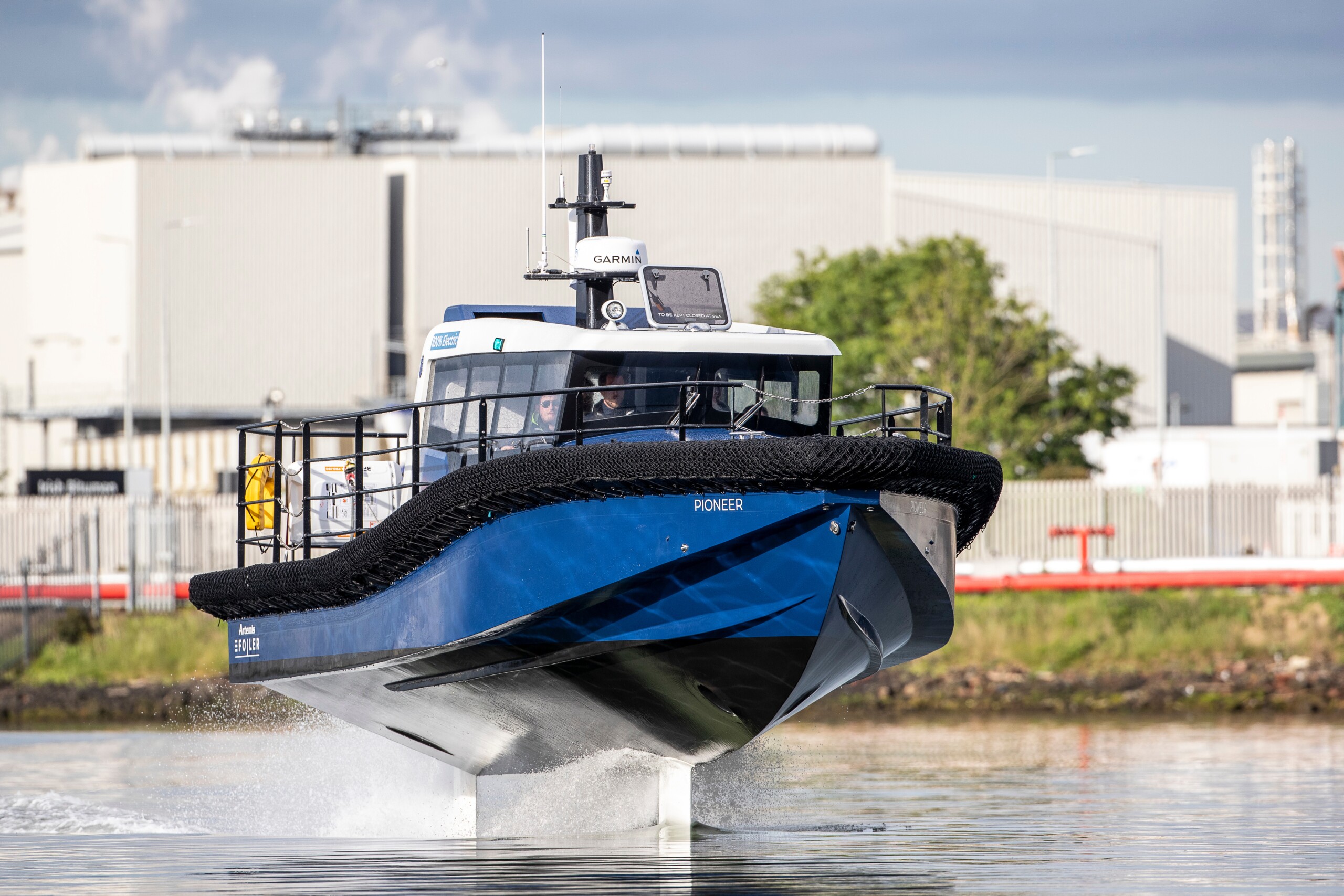Everyone knows that ships float and planes fly. Is it always true though? Is it possible to build a ship also capable of flying? Let’s find out.
Lifting Force and Foiling
If you think that the class of vessels that will be discussed in the article have airplane wings and fly at cruising speed, then you might feel a bit of chagrin. However, throughout the history of shipbuilding and design, there were lots of ships that ‘almost fly on the surface of the water’. Some of them became popular and once were one of the most popular ferry ship types and some of them are now dominating the sailing races, transforming the sport to the Formula 1 level. On the other hand, there are even some mad projects never eventuated.
Before getting into details it is important to know the difference between flying and lifting. The force produced in a direction perpendicular to the relative velocity is considered the lift force. It is produced primarily by a sequence of vortices that accumulate up to a substantial circulation and generate the lift force as the result of pressure difference. To provide lift, air flows over and underneath an airplane wing. Similarly to such, some boats create lift by pushing their hulls out of the water, which makes them ‘fly’ faster. Most of these boats have peak speeds of 40 to 50 knots, readily achievable. They’re classified as hydrofoils. Foiling is the use of hydrofoils which are fast boats’ hulls, which predominantly lift the hull fully out of the water while providing additional lift at planing speeds.
History of Hydrofoils
A British patent from 1869 encapsulated the oldest documentation of the usage of hydrofoils on a boat or ship. Parisian Emmanuel Denis Farcot obtained it after claiming that “adapting to the sides and bottom of the vessel a succession of inclined planes or wedge-shaped pieces, which as the vessel is propelled forward would have the effect of elevating it in the water and lowering the draught” would be effective.
The influence of Farcot is unknown to the precursors yet in 1906, the first hydrofoil boat was designed and built by Enrico Forlanini.
Alexander Graham Bell, the inventor of the telephone, developed the “hydrodrome,” one of the earliest effective hydrofoils. The “heavier than water ship” was his conception. Bell produced a number of experimental hydrofoil boats during World War I, improving his designs while using research from other scientists. The culmination was indeed the HD-4. The boat’s Renault engines allowed it to reach an incredible peak speed of 54 mph. The modified HD-4 hydrofoil attained an on-water speed record of 71 mph in 1919 after additional prototype development and the acquisition of two 350 hp motors from the US Navy.
Before the 1950s when military and commercial variants were developed, hydrofoils were not often deployed. However, hydrofoils were dominant vessels by the 1970s in many places, and speeds of up to 80 knots had been reached.
Hydrofoils were widely popular in the Soviet Union. Most of them served as passenger hydrofoil boats. Throughout the Cold War and into the 1980s, the Soviet Union conducted substantial hydrofoil development and manufactured streamlined hydrofoil ferries and riverboats. The Raketa (1957) type comprises one of these boats, followed by the bigger Meteor type and the smaller Voskhod type. Rostislav Alexeyev, who some regard to be the “father” of the contemporary hydrofoil due to his ideas for high-speed hydrofoils in the 1950s, was one of the most successful Soviet designers and inventors in the industry.
Sailing Hydrofoils
If you want to see sailboats really on the urge to fly, sailing hydrofoils are the ones you look for. As the ship picks up speed, the hydrofoils raise the hull up and out of the water, significantly lowering the wetted area, reducing drag, and picking up speed. A sailing hydrofoil may go faster than twice as fast as the wind, and sometimes even three times as fast.
Although the broader planform of a catamaran or trimaran can be used to produce more stability, hydrofoils can be adapted into both monohull and multihull sailboats.
Today, the most advanced version of a sailing hydrofoil can be seen in the AC75 class boats.
Used in the 2021 America’s Cup match, they can reach unimaginable speeds of more than 50 knots. The hull’s reduced drag compared to when it is generally submerged in water allows for considerable improvements in performance and speed. An AC75 boat has a Y-shaped foil system made up of arms, wings, and flaps.
Electric Driven Hydrofoils
Can hydrofoils become the new trend? With the integration of electricity, now it is a possibility.
In June 2022, a maritime business with headquarters in Belfast unveiled a distinctive hydrofoil boat. Hydrofoils affixed to the hull of the boats that are powered by electricity keep them above the water. The boats competing in America’s Cup employ a similar strategy.
By greater pace, the eco-friendly craft is propelled upward by its underwater wings. In comparison to typical sailboats powered by fossil fuels, the electric hydrofoil boat glides lightly over the water since the hull does not part the waves. It further saves friction and drags as well as running expenses.
The first vessel in the line is the renowned Candela C-8, which has cutting-edge electric propulsion technology. It has a maximum speed of 34 knots and can accommodate 12 passengers. They can be employed as crew ferries to bigger ships or as workboats.











